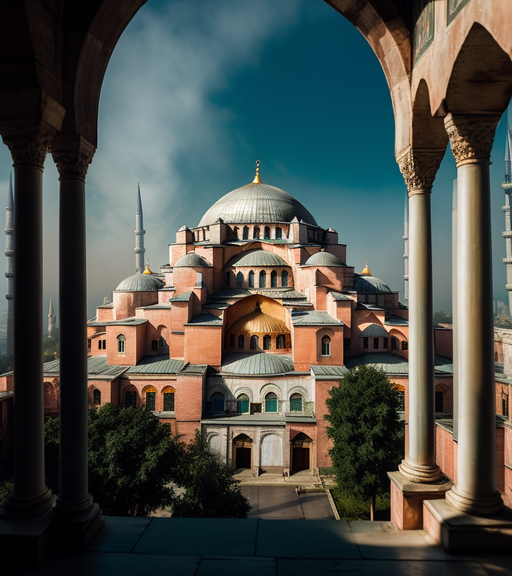The Hagia Sophia Mosque, originally known as the Hagia Sophia Church, is a historic and iconic building located in Istanbul, Turkey. Its history is rich and has witnessed significant religious and cultural transitions over the centuries. Here’s a brief overview of its historical story:
Byzantine Era (537-1453 AD)

The Hagia Sophia was built during the Byzantine Empire, and its construction was commissioned by the Byzantine Emperor Justinian I in 532 AD. It was designed by architects Anthemius of Tralles and Isidore of Miletus. Completed in 537 AD, the Hagia Sophia Church was considered an architectural marvel of its time, renowned for its massive dome and innovative design.
Eastern Orthodox Cathedral

For nearly a thousand years, the Hagia Sophia served as the primary cathedral of the Eastern Orthodox Church, playing a crucial role in Byzantine religious and imperial life. It was the site of important religious ceremonies, including coronations of emperors and patriarchs, and housed significant religious relics.
Ottoman Conquest (1453)

In 1453, the city of Constantinople (present-day Istanbul) fell to the Ottoman Turks under the leadership of Sultan Mehmed II. After the conquest, Mehmed II converted the Hagia Sophia into a mosque as a symbol of the city’s new Islamic rule.
Islamic Transformation

Under Ottoman rule, the Hagia Sophia underwent significant changes to reflect its new status as a mosque. Minarets were added to the exterior, and Islamic calligraphy and art adorned the interior. However, many of the original Christian mosaics and artworks were preserved or covered, as Islamic tradition prohibits figurative representations in places of worship.
Modern Era (1935-Present)

In 1935, under the Republic of Turkey, led by Mustafa Kemal Atatürk, the Hagia Sophia was secularized and converted into a museum as part of an effort to promote a more secular identity for the country. The building was opened to the public as a museum, and the Christian mosaics and artworks were carefully restored and unveiled.
Reconversion to Mosque (2020)
On July 10, 2020, the Hagia Sophia was reconverted into a mosque by a presidential decree, reversing its status as a museum. As a result, it once again became an active place of worship for Muslims. The decision sparked both celebrations and controversies, with opinions differing on the preservation of its historical and cultural significance.
Throughout its history, the Hagia Sophia has stood as a symbol of the intermingling of different civilizations and religions, reflecting the diverse cultural heritage of Istanbul. Its remarkable architecture and historical importance continue to draw visitors from around the world, showcasing the fascinating story of this iconic structure that has witnessed the rise and fall of empires and religious shifts across the centuries.


0 Comment